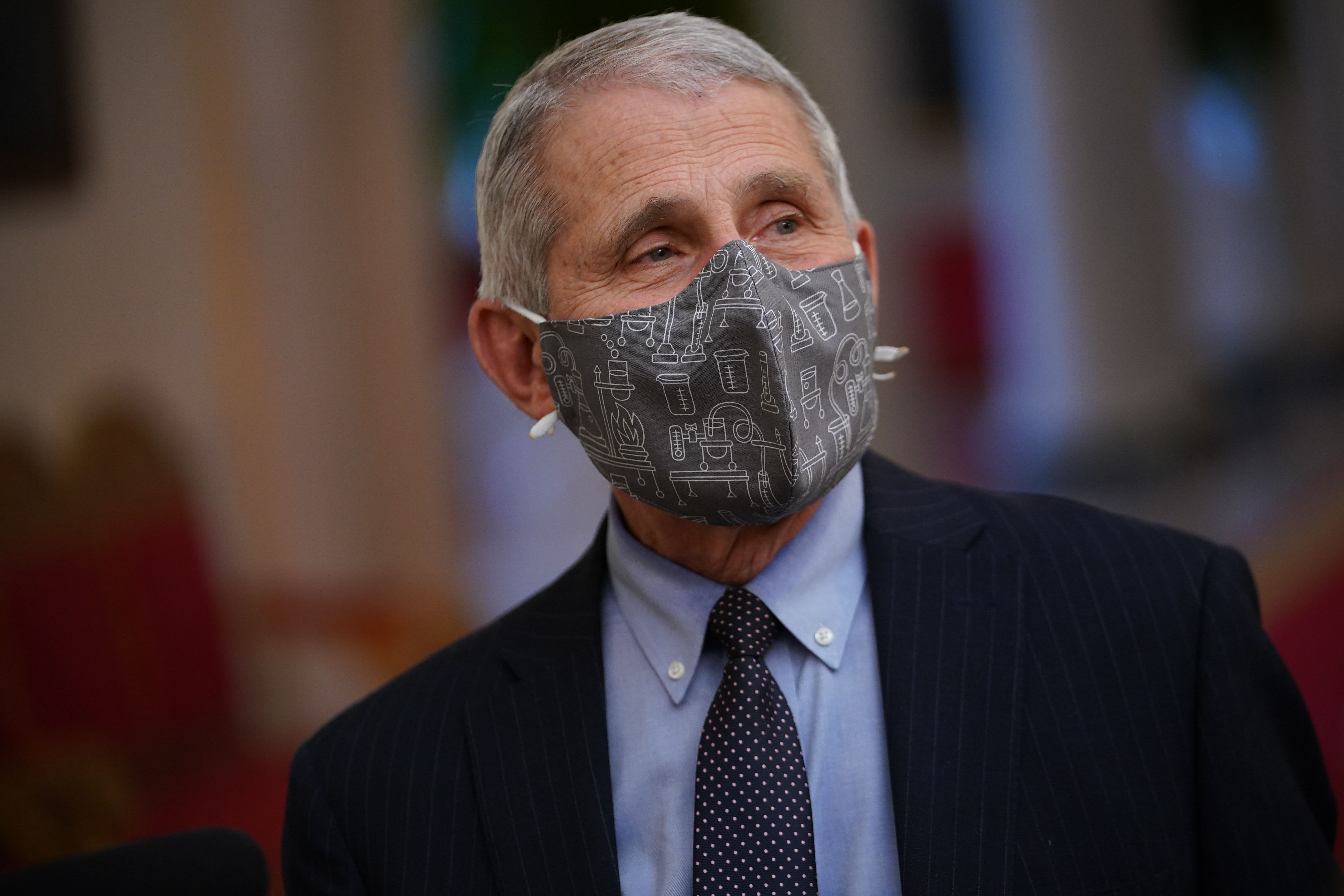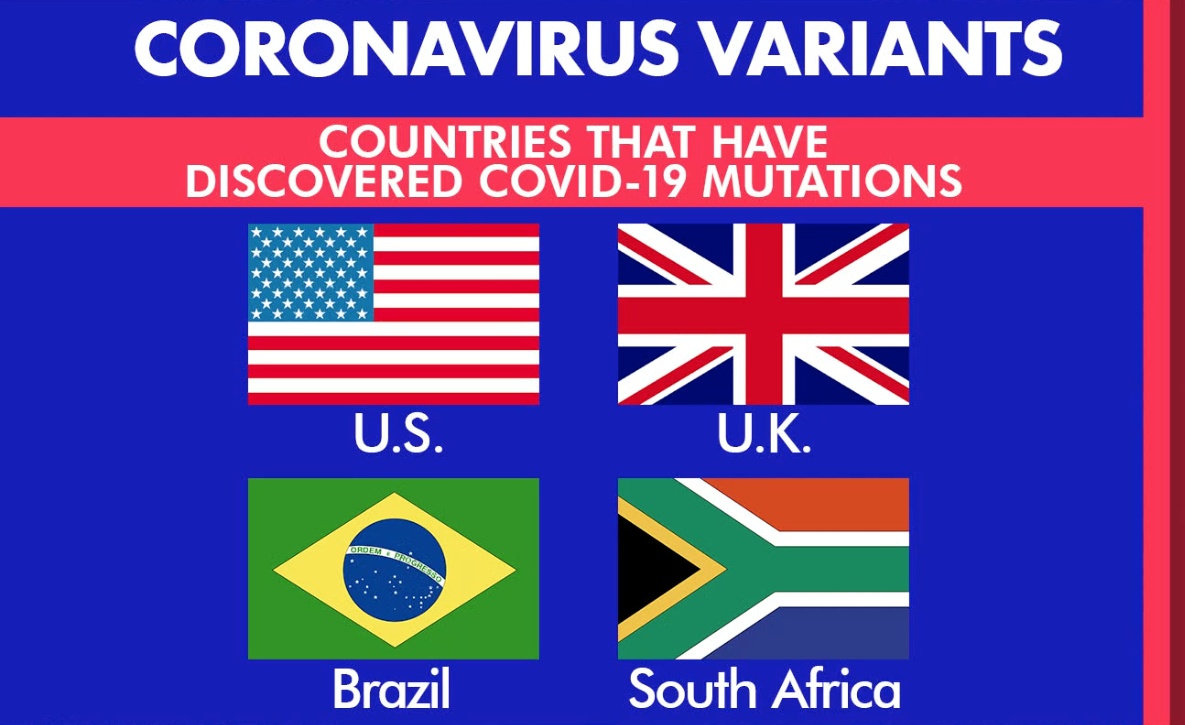Wearing a face mask has become a daily norm for millions of Americans and others around the world, but that constant wear and tear on your mask might mean it's time for a replacement. With multiple new strains of the coronavirus circulating in the U.S., now is a good time to take a closer look at the efficacy of your masks.
Earlier in the coronavirus pandemic, PPE shortages meant that many people were making cloth face coverings out of available fabrics, like T-shirts and bedsheets, or wearing bandanas. Not only are there now plenty of mask options out there, we have data on what materials and designs are most effective at blocking droplets and aerosolized particles.
"This is not something to wait on, we should be getting higher quality masks, people should be wearing higher quality masks, more or less, right away," Dr. Ashish Jha, dean of Brown University School of Public Health, said on TODAY this morning.
A recent study at Virginia Tech in Blacksburg, Virginia, evaluated the efficacy of 11 face coverings, including one surgical mask, one face shield and nine different materials for cloth face masks. Researchers evaluated multiple factors, including how effectively the masks filtered particles, how many droplets they prevented from spreading and how many droplets they kept the wearer from catching.
Taking into account their study findings and the results of other studies, the Virginia Tech researchers recommended people wear a "three-layer mask consisting of two outer layers of a very flexible, tightly woven fabric and an inner layer consisting of a material designed to filter out particles," such as a "high efficiency particulate air (HEPA) filter." The researchers also suggested that masks should be well-fitted and not have any gaps between fabric and the face. If all conditions are met, the study found that the mask's "overall efficiency would be greater than 90%."
Dr. Chris Beyrer, a professor of epidemiology at the Johns Hopkins Bloomberg School of Public Health in Baltimore, Maryland, who was not affiliated with the new study, told TODAY that layers in a mask can contribute to its efficacy. "The layers do help, because they filter out the smaller aerosols," he said.
Should you wear two masks to make them more effective?
It's important to make sure that your mask has enough layers of fabric to be effective, but some, including President Joe Biden, have been seen wearing multiple masks at once. Experts say that this is an extra step that can help limit any "leakage" of air, but isn't necessary in most cases.
"Wearing two masks helps improve the filtration ability of the mask in both directions, so it helps protect you better and it helps protect others," Lindsay Marr, a professor of civil and environmental engineering at Virginia Tech, said on TODAY in late January.
More Coverage: The COVID-19 Pandemic
"... A second mask may reduce 'leakage' and could be a reasonable thing to do, particularly for public-facing employees such as teachers, grocery cashiers and bus drivers," said Dr. Sten Vermund in early December, dean of the Yale School of Public Health in New Haven, Connecticut, noting that medical professionals wearing fitted N95 masks should avoid adding an extra layer. "There is no harm to dual masking unless someone were to have trouble breathing, but this is rare in mask use unless someone has prior respiratory limitations such as severe COPD."
Dr. S. Patrick Kachur, a professor at the Columbia University Mailman School of Public Health in New York City, said that some combinations, such as a mask and a neck gaiter, could be more effective than the singular gaiter, since some gaiters are just one layer of fabric.
"It's definitely more effective if you've already got a mask that meets that standard (for layers of fabric)," Kachur said in early December, adding that he has also seen people layer a sturdy, protective mask under a surgical face mask or other cloth covering that can be more easily washed or replaced.
If you are layering your masks, make sure that they are both cleaned regularly to avoid contamination.
"If you're layering two masks you should make sure you have enough to rotate them in and out and wash them regularly," Kachur added.
The recent study from Virginia Tech also looked at face shields, which are ineffective when used alone, but can provide extra protection when paired with a cloth or surgical mask.
"A face shield alone doesn't do much of anything because it's really all about that seal to make sure you're not breathing around (the shield) and spreading the virus or getting unprotected air into your lungs," Dr. Lucian Davis, an epidemiologist at the Yale School of Public Health in New Haven, Connecticut, who studies respiratory infections and wasn't involved in the Virgina Tech study, told TODAY late last year. Davis added that face shields can be helpful in really cramped quarters, like airplanes, or in high-risk situations like hospitals, since the virus can be transmitted through one's eyes.
In addition to seeking out a mask with multiple layers, Davis recommends looking for one that allows you to insert a filter.
"If you have materials like coffee filters or thick cloth that you can place into your mask, that would be a good idea," he said. "That way you can add an extra layer when you're in higher-risk situations."
Some masks also include nose pieces that can be adjusted for a better fit, which can also limit gaps and make the mask more effective.
"The nose is very important for the spread of the virus," said Beyrer, who also noted that masks must be worn over the nose and mouth to actually be effective. "You have to fit the mask around both your nose and your mouth."
Additional factors that were shown to impact the efficacy of face coverings in the study included how stiff the material was — a stiffer fabric often did not fit the face properly, allowing for gaps where the virus could pass through — and whether the mask was worn with ear loops or tied around the head — tying the mask around the head seems to be a more effective option, since it creates a better seal.
However, don't forget about comfort.
"I think the most important thing about a mask is being able to keep it on, and so if you're wearing meshing that's so uncomfortable that you're going to need to pull it down or take it off, you have to balance those two things," Davis said.
This story first appeared on TODAY.com. More from TODAY:



